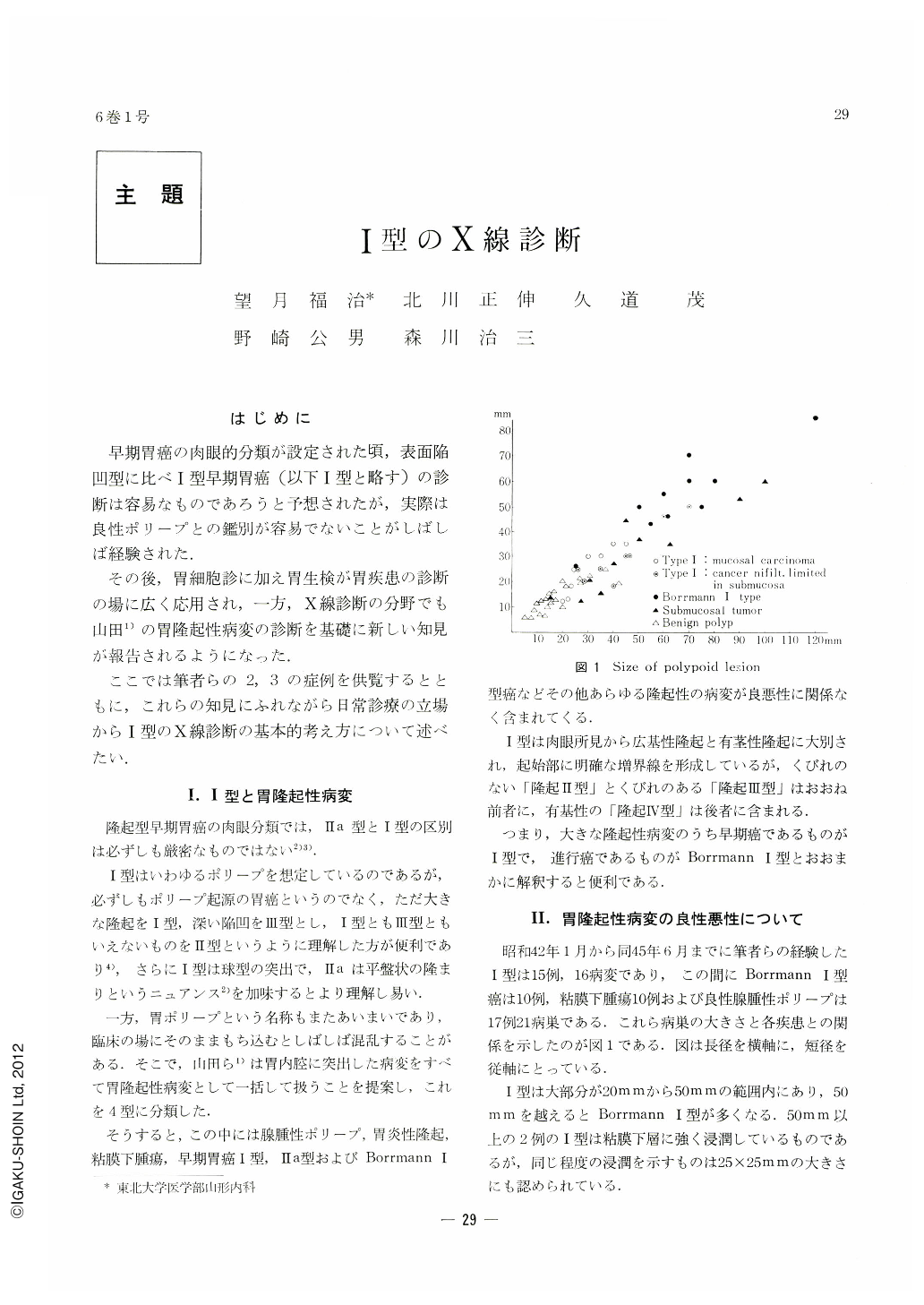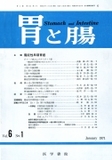Japanese
English
- 有料閲覧
- Abstract 文献概要
- 1ページ目 Look Inside
はじめに
早期胃癌の肉眼的分類が設定された頃,表面陥凹型に比べⅠ型早期胃癌(以下Ⅰ型と略す)の診断は容易なものであろうと予想されたが,実際は良性ポリープとの鑑別が容易でないことがしばしば経験された.
その後,胃細胞診に加え胃生検が胃疾患の診断の場に広く応用され,一方,X線診断の分野でも山田1)の胃隆起性病変の診断を基礎に新しい知見が報告されるようになった.
ここでは筆者らの2,3の症例を供覧するとともに,これらの知見にふれながら日常診療の立場からⅠ型のX線診断の基本的考え方について述べたい.
Study on 16 lesions of type Ⅰ early gastric cancer, 10 cases of Borrmann type Ⅰ advanced cancer, 10 cases of submucosal tumor of the stomach ancl 21 lesions of benign adenomatous polyp, all encountered during the period from January 1967 to June 1970, shows that the majority of type Ⅰ early gastric cancer are from 20 to 50 mm in diameter. When a cancer lesion grows larger than 50 mm in diameter, it mostly comes into the category of Borrmann type Ⅰ cancer. On the other hand, benign adenomatous polyps are mostly less than 30 mm in diameter. Submucosal tumors are of varying sizes, having no characteristics in their dimensions.
Generally speaking, type Ⅰ early cancer is, as compared with benign adenomatous polyp, of rougher and more granular, sometimes even of nodular surface. Borrnann type Ⅰ cancer is either large nodular or lumpy.
X-ray examination of the stomach on the basis of understanding of these characteristics is of great importance in the diagnosis of type Ⅰ early gastric cancer. However, since many a difficulty is encountered in the diagnosis by x-ray alone, co-employment of endoscopy, cytological diagnosis and gastric biopsy should not be neglected in the more accurate diagnosis of malignant lesion of the stomach.

Copyright © 1971, Igaku-Shoin Ltd. All rights reserved.


